|
Our final
survey of Outcrop 1 ended with Site 5. Very non fossiliferous,
this site was highly dolomitized and had a larger percentage
of terriginous material (mud) than any other site. Preservation
was fair to good on the few fossils found, however due to the
dolomitization of the limestone, this gallon sample took a very
long time to reduce in the acid bath! The final few pieces simply
would not dissolve. Despite the fraction of a teaspoon of material
collected here, there were a few unusual finds. Mainly the most
crinoid ossicles found in a single site yet, and something very
strange - Ostracods on the "half shell". Nearly every
ostracod found was single shell halves, not complete specimens
like every other site. This seems to indicate these were washed
in (Winnowing) from another area and fell apart upon transport.
The ostracods from the other sites were most likely buried by
silt and died intact. Another strange thing was the sheer number
of ostracods - they dominated the fossil fauna at this site.
What was found
As far as what
was found in a one gallon zip lock bag of rock, this list highlights
the best preserved specimens:
1. A very small amount of Urchin material that was very poorly preserved
2. Dozens of poorly persevered Branching / Encrusting Bryozoans
3. TWO Serpulid Worm domiciles (Chonetes)
4. ONE fragmentary Scaphopod
5. Two species of Ostracods almost all half shells
6. Several dozen of both superbly - and poorly preserved Gastropods
7. Several crinoid ossicles in two different sizes
8. Several tiny Trilobite bits
9. Only a few Bivalves - very small
10. Two productid spines
And here is what was NOT found that had been at other sites along the trail:
1. No Sponges or sponge roots
2. No solitary rugose corals
3. No Straparollus
4. No Bellerophontid Gastropods
5. No Nautiloids
6. NO winged clams
7. NO small scaphopod teleoconchs
8. NO fenestrate Bryozoans
9. NO brachs
10. NO metallic particles
For a site so poor
in fossils, there were a few surprises!
The
Fossil Photos.
A few words on
how these photos were taken. Using an Amscope stereo microscope,
one or two dozen shots of each subject were taken with the focus
shifted a bit between shots. The focus stacking software Picolay
was used to combine the images to obtain one frame of fully sharp
focus. Thousands of frames are treated in this manner and the
final images of the Fort Apache micro fossils you see here are
the results of a huge amount of work! Enjoy.
Bryozoans
 |
Dozens
of branching bryozoans were in the shell hash. Preservation was
fair to poor. |
Chonetids
(Spirorbis)
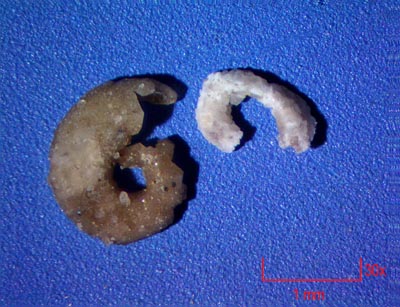 |
Serpulid
worms were apparently quite rare here. Perhaps the influx of
huge amounts of terriginous sediments did not allow them to feed. |
Bivalves
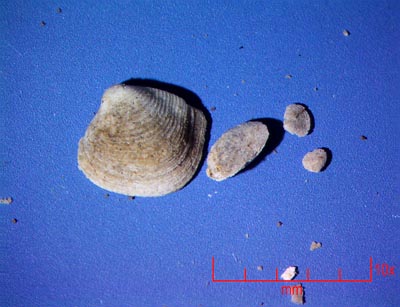 |
Strangely
enough, only a few bivalves were found, three types. |
Crinoids
 |
Crinoids
were a big surprise considering the influx of sediments. The
larger ossicles were most likely the stems, and the smaller ones
the arms and cirri. |
Gastropods
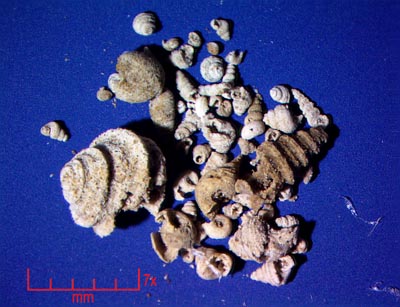 |
Gastropods
were hard to find amongst the mix of massive amounts of dirt
and ground up shells. |
Ostracods
on the Half shell
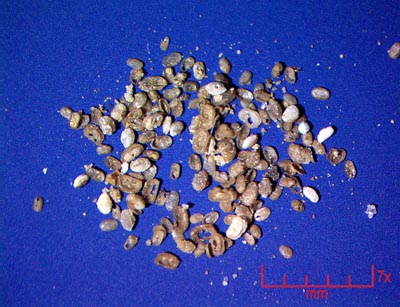 |
Nearly
every ostracod was half a shell, not the typical both halves
articulated. And there were so many of them! |
Scaphopod
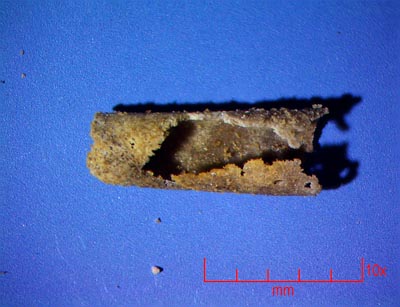 |
ONE
scaphopod was found, very poorly preserved. |
Productid
Spines
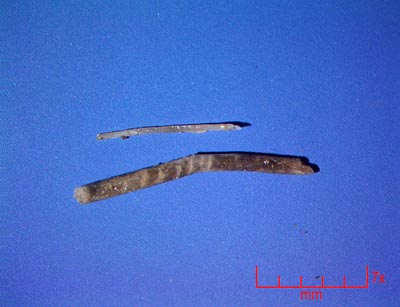 |
Two
spines in the entire gallon of rock from both zones. |
Trilobite
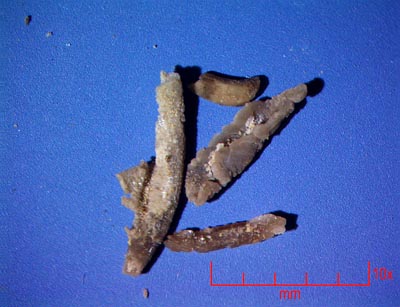 |
Strangely,
a few bits of rims were found (doublure) in poor condition. The
left one has a bit of the cranidium still attached. |
Urchin
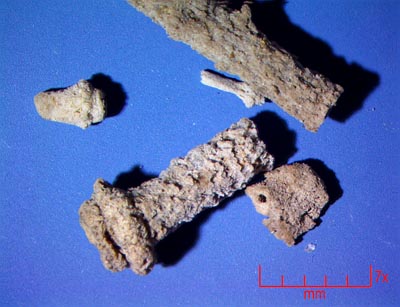 |
A
few urchin spines were found, but no plates. |
Crystals
 |
Larger
than normal crystals found seem to indicate a more complete set
of diagenetic changes occurred to this locality. |
|
